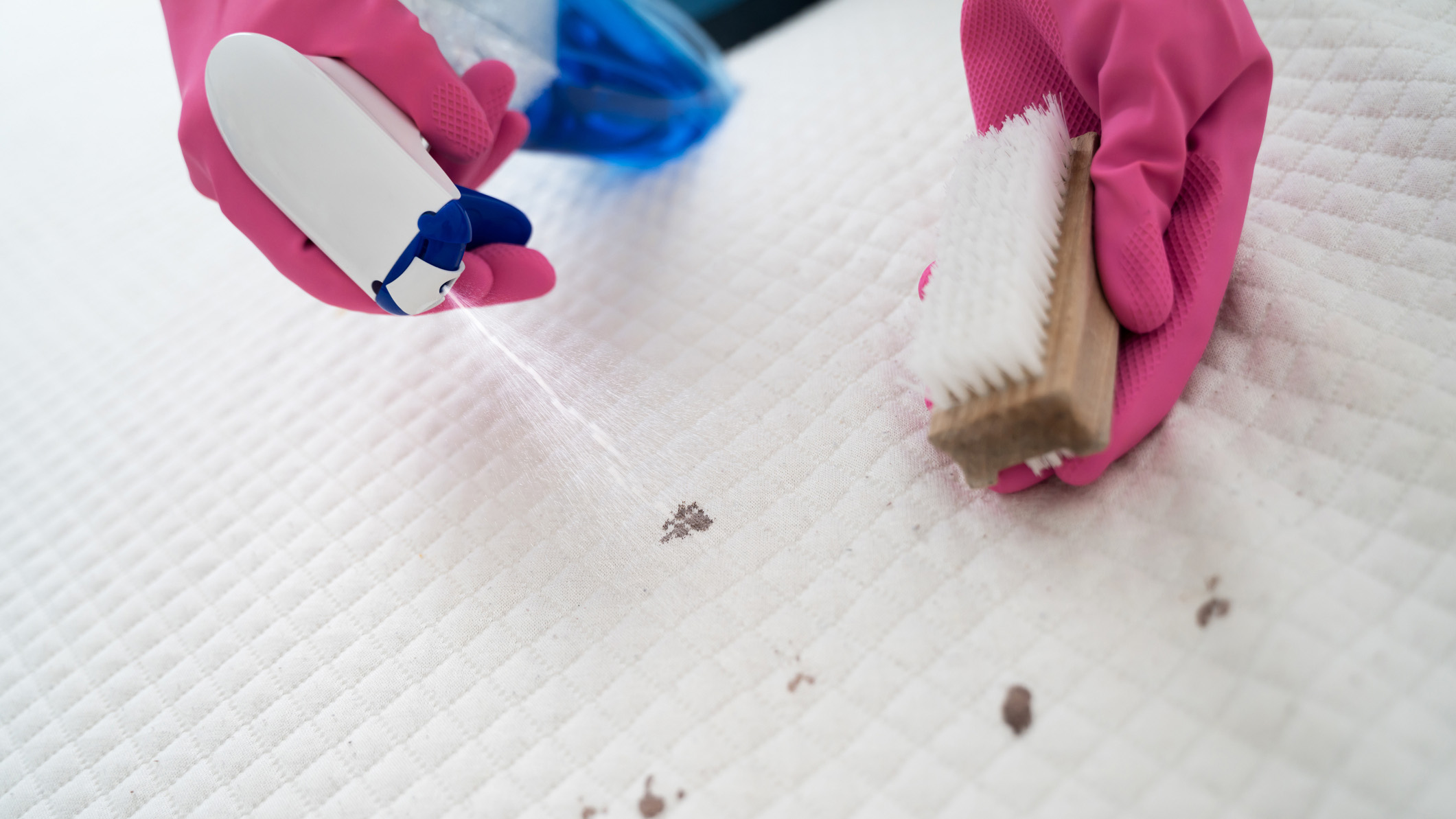
Whether it's a nosebleed, a cut, or your period, blood stains on a mattress are more common than you may realize. Here we're sharing our tried and tested methods for removing blood from your mattress without damaging it.
The good news is that most blood stains can be removed using products you already have at home. However, the methods will vary as some materials (particularly memory foam) are more sensitive to moisture than others – and deep-seated blood stains will require a little more elbow grease.
If after reading this you decide that your mattress is beyond saving, take a look at our guide to this year's best mattresses for all sleepers and budgets. Many of them are discounted in price too thanks to this year's Labor Day mattress sales and deals. For now, here's how to tackle those blood stains...
How to get a blood stain out of a mattress
Depending on the freshness and size of the stain, you may only need a few of the supplies and steps below. Try to avoid using harsher ingredients until it's absolutely necessary, and after cleaning we recommend investing in one of the best mattress protectors to keep stains, smells and germs away from your newly cleaned bed.
What you’ll need:
For smaller/fresher blood stains:
- Paper towels
- Microfiber cloths (wet and dry)
For deeper/more stubborn stains:
- Clean bowl (for mixing)
- 1/4 cup hydrogen peroxide
- 2 tbsp of cornstarch
- 2 tbsp of salt
- 1 tbsp of baking soda
- Soft-bristled brush
- Clean cloth (for blotting)
- Cold water
1. Blot fresh blood stains
If the blood is fresh then use a paper towel and blot the stain to remove as much moisture as possible. Be mindful not to rub as doing so will risk spreading the stain or pushing it deeper into the fibers of the mattress. You should apply firm pressure when blotting the stain to make sure all traces of it are soaked up. Keep doing this until the paper towel comes back dry.
2. Try a small amount of cold water
If the stain is small and still fresh, you may be able to blot the area with a microfiber cloth dipped in cold water. Keep dipping the cloth into the water and wring well to ensure excess moisture is removed. This is important if you're cleaning a memory foam mattress as too much moisture could damage the foam.
Use a clean area of the cloth once the blood is transferred to avoid extending the stain. If you notice that the blood stain has lifted, use a clean, dry microfiber cloth to blot the area for leftover moisture. Leave the stain to air-dry.
3. Make a hydrogen peroxide cleaning paste
For stubborn stains, you're going to need something a bit stronger. Our tried and tested homemade mattress stain remover is the perfect solution. In a clean mixing bowl, combine 1/4 cup of hydrogen peroxide, two heaped tablespoons of cornstarch, two tablespoons of salt, and one tablespoon of baking soda.
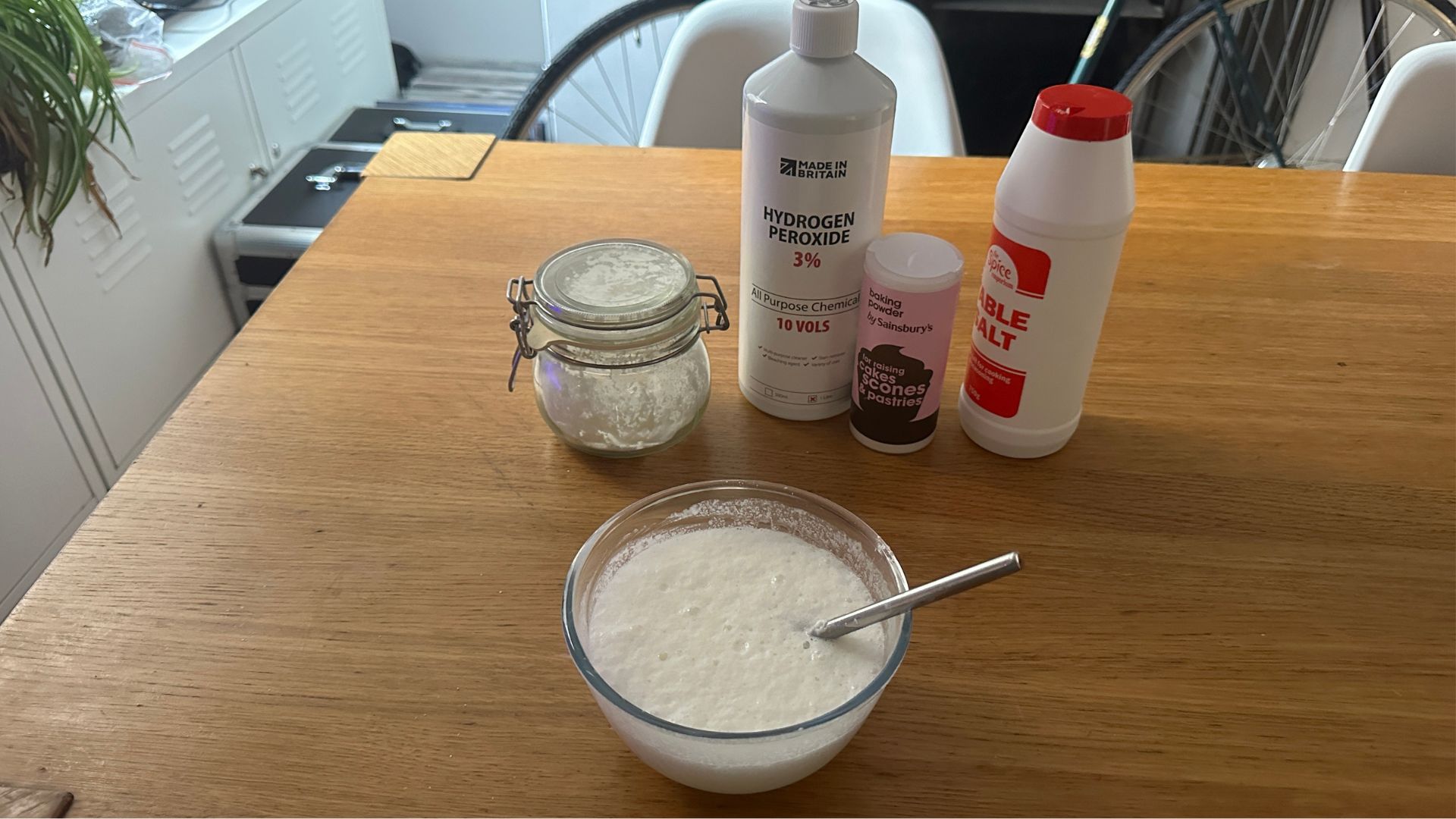
Mix until you get a paste-like consistency; you may want to start with a small amount and add more as needed. You'll notice this will start to bubble and fizz – don't worry, it's just the hydrogen peroxide and baking soda activating, making it perfect for tackling your stain.
Using a soft bristle brush, apply the mixture to the blood stain. Start at the outer edge of the stain and work toward the centre, gently massaging the paste into the fabric of the mattress. Leave this mixture to sit on the stain for at least an hour, or until it stops bubbling.
Once your paste has had a chance to work, dip a clean cloth into some cold water and blot at the area to remove the paste. Your cloth should be damp, not soaking, as you don't want to oversaturate your mattress with water (especially if it's foam). Leave your mattress to dry fully before vacuuming the surface to ensure that you've removed all traces of the paste.
What to do if the blood stain won’t budge
Blood stains are not easy to remove because of the proteins – primarily hemoglobin, which gives blood its red color (And if you've ever put reds in your washing machine with your whites, you'll know how that goes!) When exposed to air, these proteins thicken up and bind tightly to fabrics, making it difficult (but not impossible) to shift.
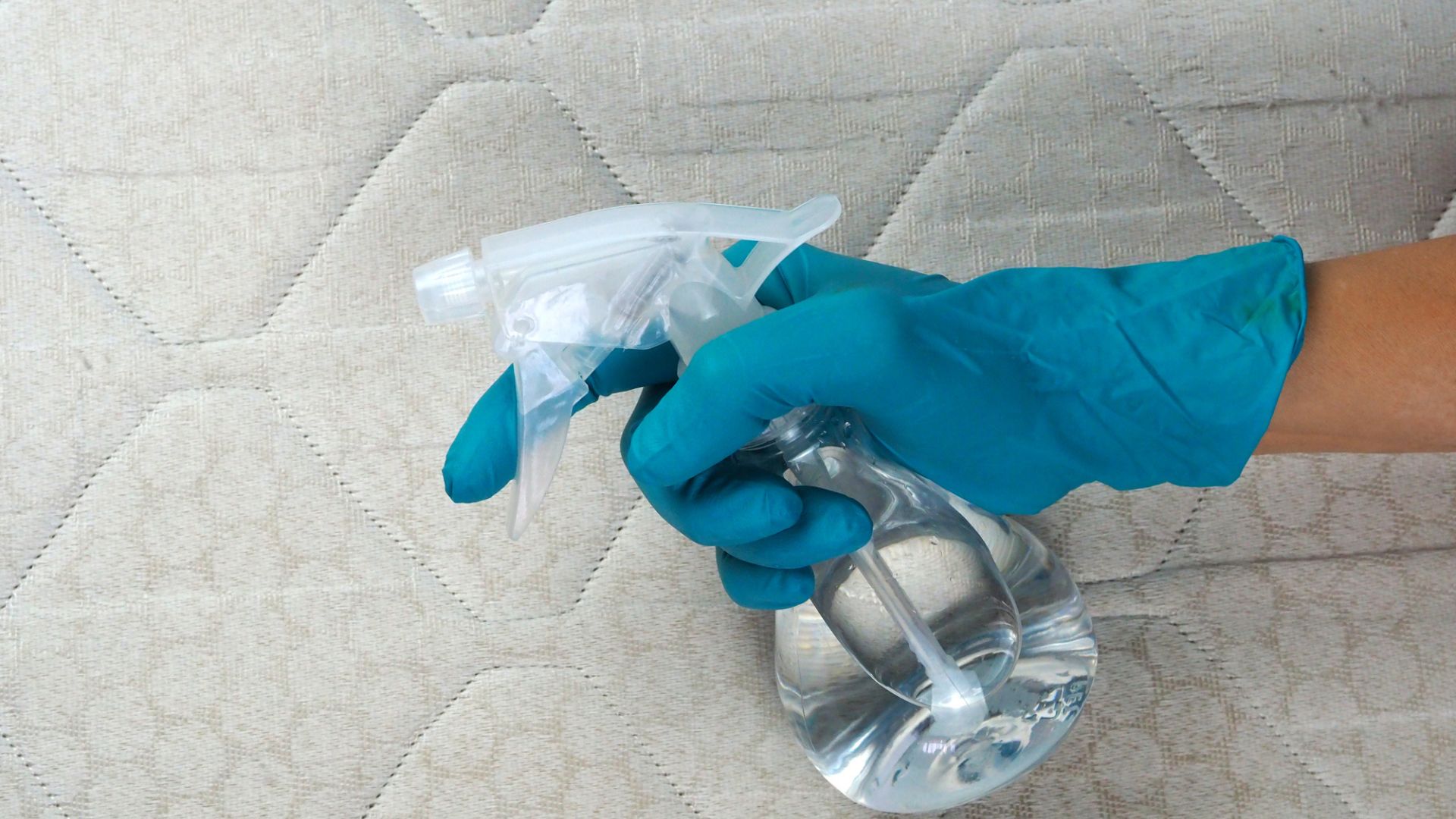
The materials of your mattress can also make a difference in how easy a blood stain is to remove. Synthetic fabrics tend to trap blood proteins more effectively than natural fabrics such as cotton or linen.
And of course, time plays a huge factor. The quicker you tackle a blood stain on your mattress, the easier it is to remove. So if you’re still struggling with removing blood stains from your mattress, or you're tackling a stain that has been left to set overnight, here are a few more tips and tricks:
1. Use an enzyme-based stain remover
Enzyme-based stain removers are effective on blood stains because they contain proteases, which break down the proteins found in blood by digesting them into small, water-soluble molecules that can be easily washed away. This makes enzyme-based cleaners good for removing dried and set-in blood stains as well as tackling other stubborn stains like sweat, grass, and food.
To clean your mattress using an enzyme stain remover, place a small amount on a microfiber cloth and starting at the edge of the stain work towards the center. Leave it for at least 30 minutes before using a clean microfiber cloth dipped in cold water to blot away the stain remover and the stain. Allow your mattress to air dry before replacing your bedding.
2. Use a meat tenderizer
A tenderizer is a kitchen staple used to break down the fibers and proteins of meat to leave it tender. It’s also surprisingly effective for cleaning blood stains. When you add meat tenderizer to a blood stain, an enzyme called bromelain breaks down the proteins, enabling you to lift stains from the surface.
Create a paste by mixing unseasoned meat tenderizer with cold water. This should be thick enough so it sticks to the stains at a consistency that makes it easy to apply. Work the paste into the stained area and leave for up to an hour. Once it’s dried, use a cloth dipped in cold water to rinse the area and remove any leftover paste.
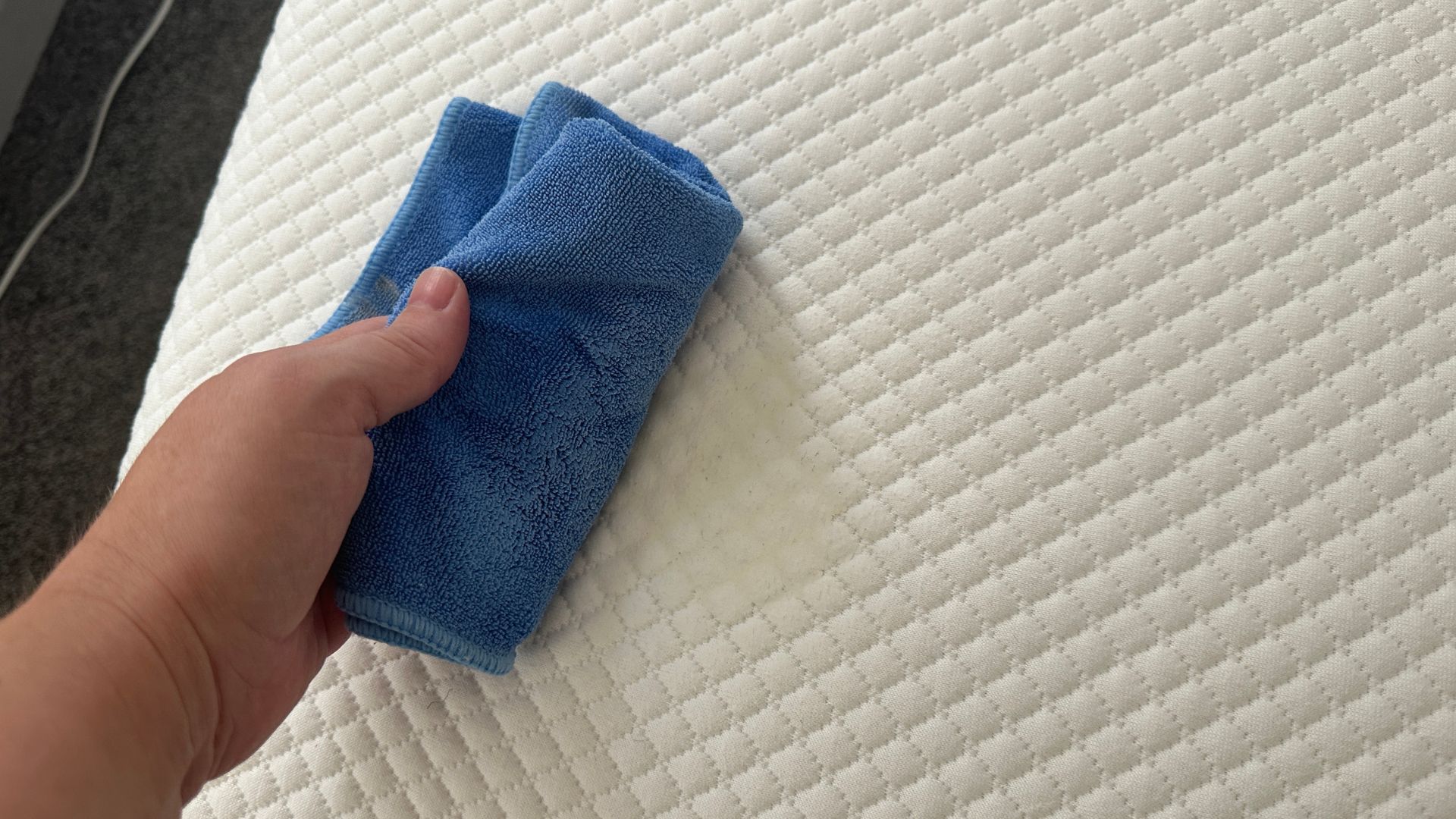
3. Use crushed aspirin
Asprin works in a similar way as the meat tenderizer. Take some plain aspirin tablets and crush them into a powder before adding a few drops of water to create a paste. Apply it directly to the blood stain and leave it to sit for around 30 minutes. (You can leave it longer if the stain is particularly set in.) Rinse with cold water and leave to dry.
4. Use oxygen bleach
We don't usually recommend using any form of bleach on your mattress but if you're struggling to get that blood stain out, oxy-bleach could be your final hope.
In a small bowl combine 1/2 cup of dry oxygen bleach with 1/2 cup of cold water. Work the mixture into the stain using a soft-bristled brush. Leave the paste to work for at least 3-4 hours – although, the longer you can leave it the better as oxygen bleach is mild and slow-acting.
Using a clean cloth dipped in cold water and wrung out fully to ensure it's not dripping, blot the bleach and blood. Leave the mattress to dry before using.
Blood stains on a mattress: FAQs
Can you use hot water on blood stains?
It can be so tempting to use hot water but this common mistake can make blood stains harder to remove. The hemoglobin in blood coagulates (clumps together) when exposed to heat. This causes the proteins in the blood to bind more tightly to the fibers of the mattress. In some cases, the heat from the hot water can also cause the iron in the blood to oxidize, turning the stain brown.
Hot water is not safe to be used on mattresses, full stop. Some mattress materials –particularly foam, memory foam, and latex – can shrink, warp, and become a breeding ground for mold and bacteria when hot water is used. Cold water is always best for treating blood stains on a mattress because it'll stop the proteins from clumping together and setting.
Can toothpaste get blood out of a mattress?
Toothpaste is often touted as a DIY solution for a lot of home hacks but it's not the best thing to use for getting blood out of your mattress. Regular toothpaste doesn't contain the enzymes needed to break down the proteins found in the blood, which is essential for stain removal. Some whitening toothpastes use baking soda, which could help in theory, but it's unlikely to be in a large enough quanity to do anything.
Some toothpastes also have abrasive ingredients and colorants that will damage the surface of your mattress and leave behind a residue that is difficult to remove. Not to mention, toothpaste may just mask the stain rather than actually remove it, making it harder to treat the stain later on.
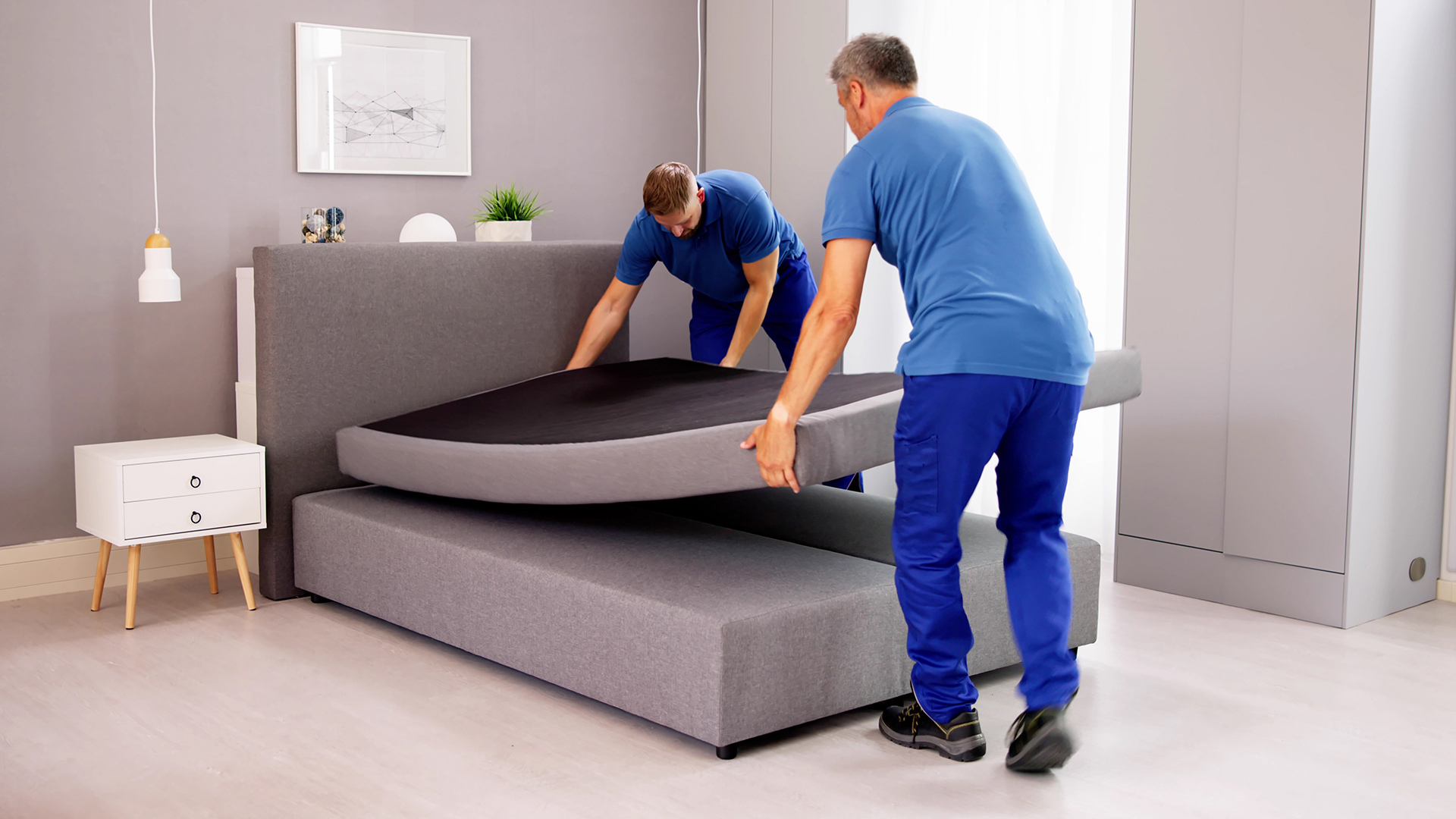
Should I buy a new mattress instead?
You don't need to get rid of your mattress just because of one or two stains, especially if you've attempted to treat and remove them. But, if your mattress is covered with stains and it's taking over a large area of the surface, or your mattress is old and starting to feel uncomfortable, then it could be time to invest in a new one.
Blood and other bodily fluids can harbor bacteria, which can trigger sensitives. But when stains get too deep into the mattress it can damage the fabrics and foams. If you can't afford to upgrade your mattress right now, then you could invest in one of the best mattress toppers which will provide an extra layer of protection as well as cover any stains on your mattress surface.
Today’s best mattress sales
- Saatva mattresses: up to $600 off
- DreamCloud mattress: up to 50% off
- Nectar mattresses: up to 40% off
- Helix mattresses: 20% off + free pillows
- Casper mattress: 20% off all beds
- Emma mattresses: up to 55% off
- Tempur-Pedic: 30% off cooling beds
- Brooklyn Bedding mattresses: 25% off sitewide
- Purple mattress: get up to $300 of free bedding







